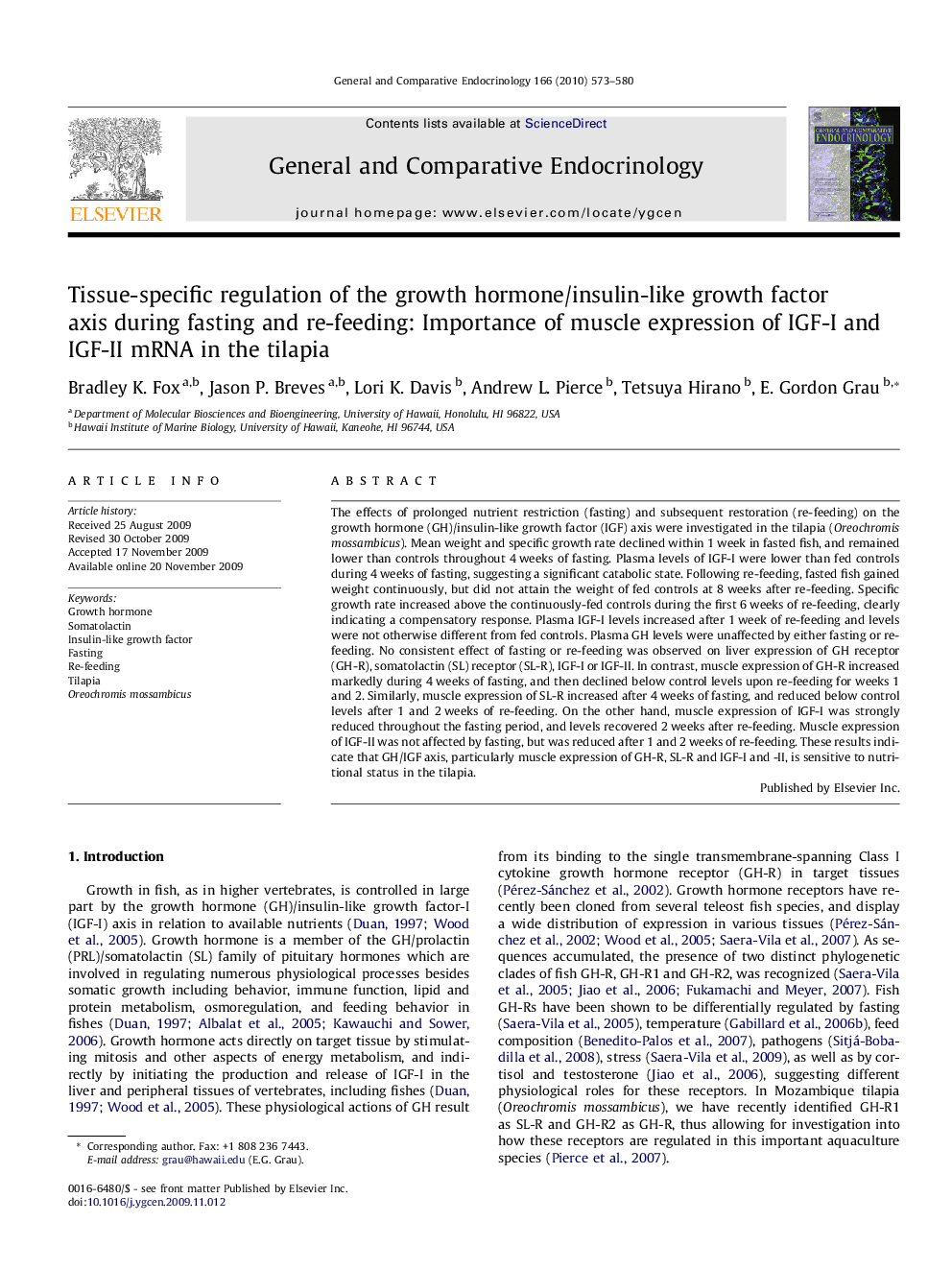| Article ID | Journal | Published Year | Pages | File Type |
|---|---|---|---|---|
| 2801100 | General and Comparative Endocrinology | 2010 | 8 Pages |
The effects of prolonged nutrient restriction (fasting) and subsequent restoration (re-feeding) on the growth hormone (GH)/insulin-like growth factor (IGF) axis were investigated in the tilapia (Oreochromis mossambicus). Mean weight and specific growth rate declined within 1 week in fasted fish, and remained lower than controls throughout 4 weeks of fasting. Plasma levels of IGF-I were lower than fed controls during 4 weeks of fasting, suggesting a significant catabolic state. Following re-feeding, fasted fish gained weight continuously, but did not attain the weight of fed controls at 8 weeks after re-feeding. Specific growth rate increased above the continuously-fed controls during the first 6 weeks of re-feeding, clearly indicating a compensatory response. Plasma IGF-I levels increased after 1 week of re-feeding and levels were not otherwise different from fed controls. Plasma GH levels were unaffected by either fasting or re-feeding. No consistent effect of fasting or re-feeding was observed on liver expression of GH receptor (GH-R), somatolactin (SL) receptor (SL-R), IGF-I or IGF-II. In contrast, muscle expression of GH-R increased markedly during 4 weeks of fasting, and then declined below control levels upon re-feeding for weeks 1 and 2. Similarly, muscle expression of SL-R increased after 4 weeks of fasting, and reduced below control levels after 1 and 2 weeks of re-feeding. On the other hand, muscle expression of IGF-I was strongly reduced throughout the fasting period, and levels recovered 2 weeks after re-feeding. Muscle expression of IGF-II was not affected by fasting, but was reduced after 1 and 2 weeks of re-feeding. These results indicate that GH/IGF axis, particularly muscle expression of GH-R, SL-R and IGF-I and -II, is sensitive to nutritional status in the tilapia.
